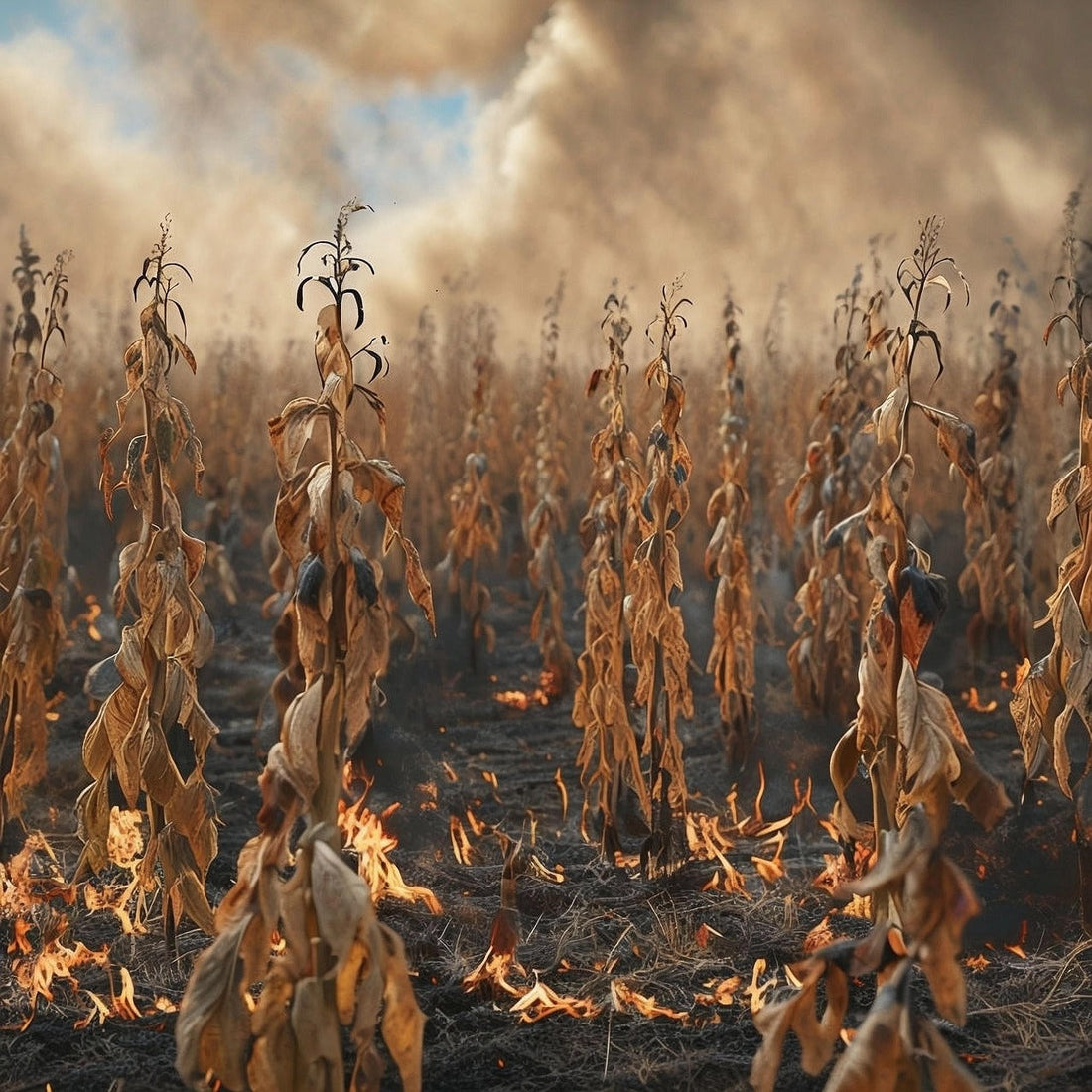
Nigeria Food System Challenges and Solutions
Share
Every morning, under the blazing Nigerian sun, farmers step onto their land with determination and hope. Nigeria is rich in agricultural heritage and endowed with over 70 million hectares of arable land. Yet, millions of families across this nation still go to bed hungry. Despite its immense natural resources, Nigeria’s food system is in crisis, plagued by a combination of structural, environmental, and socio-economic challenges. From the bustling markets of Lagos to the parched fields of Sokoto, the cracks in the nation’s food chain are becoming impossible to ignore.
According to the Food and Agriculture Organization (FAO, 2023), over 25 million Nigerians face moderate to severe food insecurity. Farmers struggle to get their crops to market due to decaying infrastructure. Others abandon their fields altogether, driven away by climate shocks and escalating insecurity. Smallholder farmers—who produce nearly 90% of Nigeria’s food—often lack basic tools, access to finance, and reliable markets (USAID, 2021). Behind these statistics are real lives, real struggles, and real potential.
Mind-Blowing Issues in Nigeria's Food System
1. Insecurity and Armed Conflict
Violence in northern Nigeria has disrupted farming activities, displaced millions, and deepened food scarcity. The conflict in Borno, Yobe, and Adamawa states, particularly, has reduced food access, shrunk purchasing power, and limited humanitarian support. In Borno's remote LGAs like Abadam and Marte, households face Emergency (IPC Phase 4) food insecurity outcomes that could persist into early 2025 (FEWS NET, 2024).
The spillover effect is felt across the country. As farmers flee conflict zones, urban migration rises, stretching city food supplies and creating heavy dependence on imported staples. For example, Nigeria’s maize imports skyrocketed by 637% in 2020, despite being Africa’s top maize producer the year before. This rise in import dependence also drives up livestock feed costs, weakening poultry and animal production.
2. Inadequate Infrastructure
Many farming communities are isolated by crumbling roads and poor transport systems, preventing crops from reaching urban markets. In regions without cold storage, up to 40% of food is lost post-harvest. These losses, especially in perishable crops like tomatoes, severely impact farmer incomes and contribute to rising food prices for consumers.
For small-scale farmers, the absence of reliable electricity and storage means their produce rots before it can be sold. This not only leads to waste, but also discourages productivity and investment in agriculture.
3. Climate Change and Environmental Stress
Climate change poses an urgent threat to Nigeria’s food production. Unpredictable rainfall patterns, prolonged dry spells, and rising temperatures are making traditional farming practices less effective. Soil fertility is declining, and water sources are drying up.
Farmers like Umaru Muazu in Sokoto State now face longer dry seasons and shrinking rivers. After two decades on his 5-hectare farm, he’s watching his maize and millet wither, unable to afford a well. "In the past, you could get a lot with a small farm," Umaru says, standing beside what used to be a river, now reduced to a stagnant puddle. His story reflects a growing crisis driven by climate extremes.
Real Stories Behind the Data
Farming Against All Odds
Umaru’s story is far from unique. Across Nigeria, farmers are experiencing firsthand the devastating effects of climate change, conflict, and poor infrastructure. Their challenges are not just about poor harvests; they’re about lost futures, shrinking incomes, and food insecurity for their families and communities.
Vendors and Markets Struggling to Survive
Market vendors in cities like Ibadan and Enugu report price volatility and product scarcity as food supply chains weaken. "Sometimes, a basket of tomatoes that used to cost ₦500 now sells for over ₦1,500," says Aisha, a local tomato seller. Such spikes affect every level of the supply chain, especially low-income households that can no longer afford basic food items.
Conclusion: A Call for Coordinated Action
To rebuild Nigeria’s food system, collaboration is crucial. Government, private sector, and civil society must act together to modernize agriculture and empower those who feed the nation. Nigeria has everything it needs to transform its food system: fertile land, a youthful population, and untapped innovations. But it must turn potential into progress.
Key reforms should focus on:
Investing in climate-smart agriculture to build resilience.
Empowering youth through training, agri-finance, and start-up support.
Expanding rural infrastructure, including roads, storage, and cold chains.
Integrating technology, from precision farming to market-access apps.
Cross-sector coordination can unlock sustainable value chains, create jobs, and reduce hunger. Without it, the inefficiencies that currently define the system will persist. The time for action is now—Nigeria’s food future depends on it.
Reference
1- Story 7: Nigeria’s Food System Challenged by Conflicts, Climate Change and Economic Headwinds | GAIN
2- Nigeria Food Security Outlook, June 2024 - January 2025 - Nigeria | ReliefWeb
3- The Untold Struggles of Rural Farmers in Nigeria
4- Nigeria has a food security problem as water for crops is harder to find | AP News
